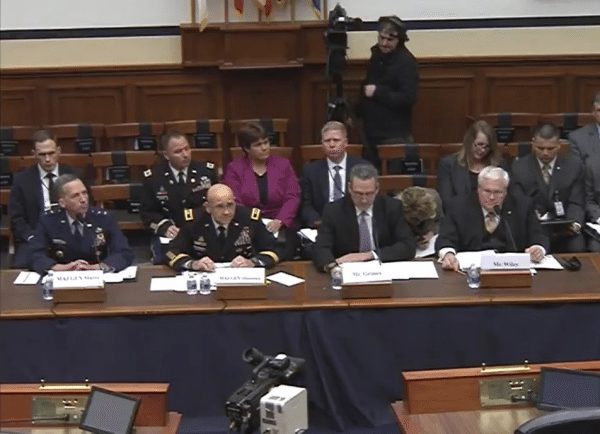
There is no evidence that leadership in the U.S. Central Command manipulated intelligence products to create a false narrative of success in the battle against Daesh, according to a recent Defense Department inspector general report. But the nearly two-year long investigation did reveal problems with poor leadership, improper communication and insufficient training in intelligence tradecraft standards.
Tradecraft standards serve as a common foundation for assessment criteria, ethic for analytic rigor, and personal integrity in analytic practice across the intelligence community. These standards also promote protection of privacy and civil rights by ensuring objectivity, timeliness, relevance and accuracy of sensitive information used in analytic products. Failure to uphold these standards can lead to a breakdown of trust, as it did in CENTCOM.
The House Armed Services Committee’s Oversight and Investigations Subcommittee held a hearing on Feb. 28 to discuss the report’s findings and recommendations with DOD leadership. Witnesses included Glenn Fine, acting inspector general for DOD; Air Force Maj. Gen. James Marrs, director of intelligence for the Joint Staff; Jaques Grimes, director of defense analysis in the Office of the Undersecretary of Defense for Intelligence; and Army Maj. Gen. Mark Quantock, director of intelligence for CENTCOM. In their joint statement for the record, they said DOD has, “already taken a number of policy, governance and oversight steps over the past several years to create a stronger foundation for objective, high-quality defense intelligence analysis.” Many of these efforts, they said, predate the DOD OIG investigation.
These policies and standards make up the intelligence tradecraft. The Defense Intelligence Agency is responsible for establishing and maintaining tradecraft through training, education and certification programs for DOD analysts. DIA’s Director for Analysis Neil Wiley discussed some of their ongoing efforts at Tuesday’s hearing.
“We’ve been aggressively investing in initiatives to strengthen analytic tradecraft and analytic processes,” he said. “We established the Defense Analytic Tradecraft Council to coordinate and implement analytic tradecraft and process improvements across the enterprise – most noteworthy thus far have been the implementation of an enterprisewide analytic ombudsman program, and a common process for analytic product evaluations. We’ve expanded professional analysts career education through the addition of a 10-day course for DIA analysts offered both in the national capital region and at the combatant commands, stressing and exercising Intelligence Community Directive 203 tradecraft standards and analytic design.”
“The support to national security decision-making requires the best intelligence, knowledge, advice and recommendations that can shape strategic outcomes,” Marrs said. “As we look to the future to ensure we have this capability, we will continue to work with the Office of the Undersecretary of Defense for Intelligence, DIA and combatant command J2s to find ways to improve the defense intelligence enterprise’s analytic policies, processes, training and education.”
The Directorate for Intelligence, J-2, is a DIA directorate supporting the Chairman of the Joint Chiefs of Staff, the secretary of defense, Joint Staff and Unified Commands.
“Integrity is at the foundation of everything we do – no matter what your role,” said DIA Director Lt. Gen Vincent Stewart. “It has been, and will remain, one of our top priorities. I am committed to ensuring analysts have the tools, resources and support needed to continue speaking truth to power.”

